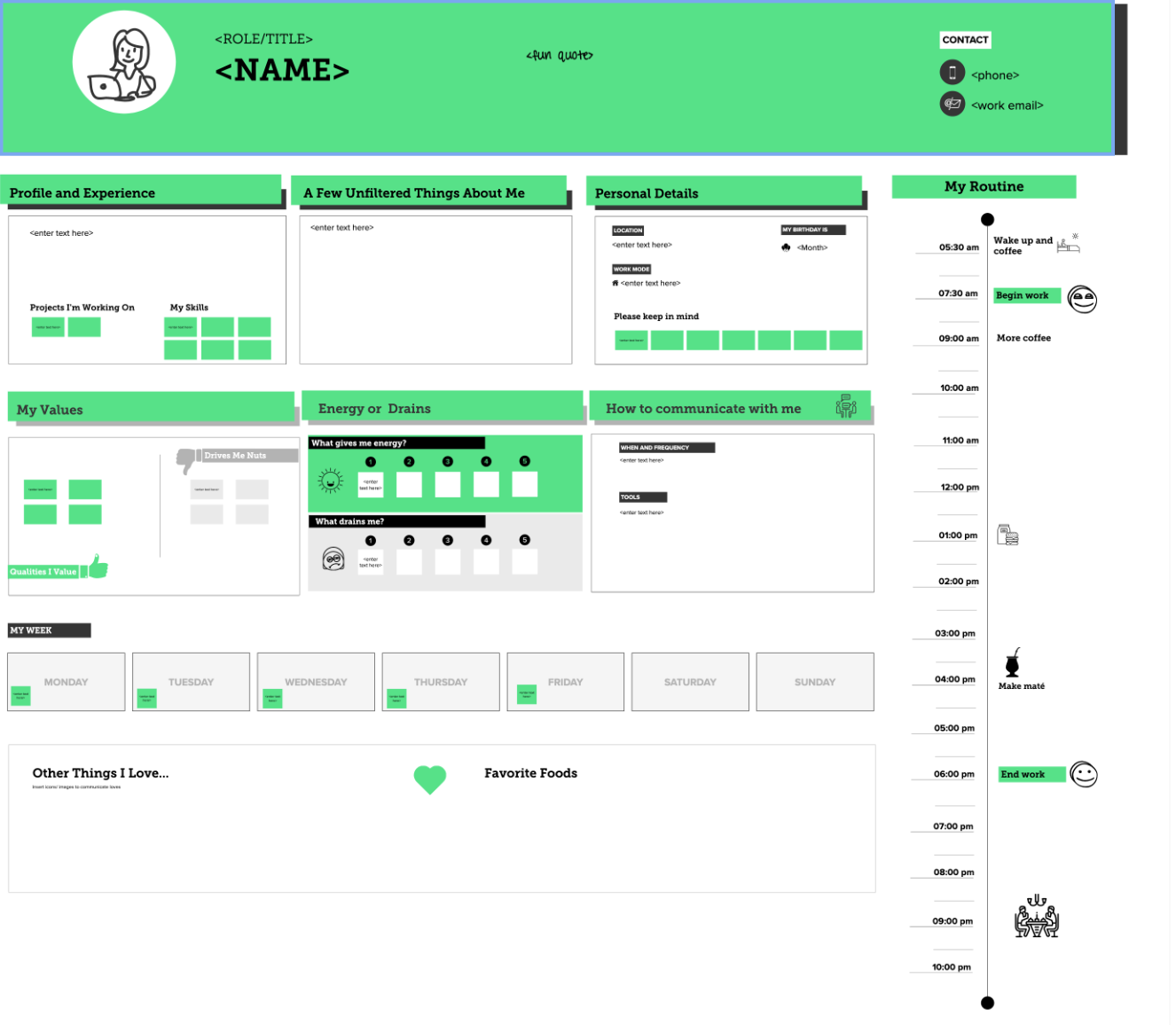BearCode
consulting
Workshop: Creating Personal User Manuals to Foster Team Cohesion
As if building relationships with coworkers weren't hard enough, throw in 2 years of anti-social behavior and now a Hybrid workforce that's here to stay. I don't know about you, but Teams' video calls with new members of the team (i.e. strangers) are extremely awkward. Even more awkward, trying to hold a conversation with a human, face-to-face, after 2 years of social isolation. The end result? Team members who don't feel a sense of connection or community. For remote workers in particular, it's easy to feel left out and not be part of the culture. Building a team in this new Hybrid environment and enabling them to do their best work requires a different approach from the ways of the past. Enter, part one of our Team Building workshop series, "Personal User Manuals".
Difficulty: Easy
Time to Complete: 1 Week (Planning to Execution)
Workshop Duration: 1 - 1.5 hours
Team Geography: In-Person, Hybrid, Remote
What Are the Benefits of a Personal User Manual and How Can It Help Develop Better Relationships Amongst Your Team?
You have likely heard of a personal user manual in the workplace, it goes by many different names such as a "bio", "user manual", or "guide to working with me", to name a few. When used effectively, a user manuals can accelerate the formation of a new team, and help individuals feel comfortable with one another while developing an understanding of how the group likes to work. This is done by sharing personal details and work preferences, embracing your collective quirks, and finding opportunities to bond through shared goals, values, and interests. Finding shared points of commonality while developing an understanding differences in communication and working styles can help avoid misunderstandings among team members and build the foundation for deeper relationships between both existing and new employees. This critical element of team-building is a great tool for in-person, hybrid, or fully remote teams.
A Practical Example of How a User Manual Can Reframe a Team.
Getting Started - User Manual Template
When it comes to content, I've found that a blend of topics is ideal. If you focus too much on fun, you may not find the deeper connection to critical values in the workplace. On the other hand, if you keep it too work-focused or tailored to leadership's objectives, you lose the opportunity to inject fun into the activity and begin to build psychological safety. Below are some ideas to get your manual started, try to limit the content to a single page or slide, ideal topic count is somewhere between 6 - 10. Short and sweet works best, each teammate should be able to present their bio in 3-4 minutes max to maintain attention and engagement. Don't be afraid of some trial and error with your team, pilot a template with a few critical team members prior to finalizing.
Work Focused Topics:
Personal Focused Topics:

Prep Work Required
To prepare for this workshop, you'll need to first create a user manual template in a tool that is familiar and available to the entire team. After creating your layout, be the guinea pig and create the first manual for your team to use as inspiration. I recommend sharing this with your team at least 3 days prior to the workshop to allow ample time to complete.
When and How to Use Your Team's User Manuals
I love running this session for a new team that has recently come together or experienced significant change. It is also a great way to strengthen relationships within existing teams, regardless of level. When leveraging this in a larger group or in groups that are established but experience regular fluctuation of team members, I suggest finding a creative way to incorporate a "getting to know you" section in a regularly planned team meeting where you can introduce 1-2 team members each session. Consider storing team member guides in a centralized location so new team members can gain inspiration or find individuals they may want to connect with. Treat these as living documents that can be updated and revisited with the team annually or when there are significant team changes.
An updated guide on why and how to create personal user manuals can be found here: Personal User Manuals for Team Cohesion
Articles in this Category